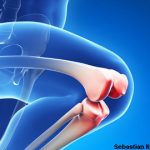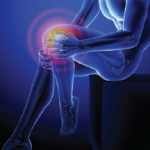Research has demonstrated that exercise-based physical therapy is as effective at maintaining knee function as surgery in patients with degenerative meniscal tears at risk of developing knee osteoarthritis.


Research has demonstrated that exercise-based physical therapy is as effective at maintaining knee function as surgery in patients with degenerative meniscal tears at risk of developing knee osteoarthritis.

Patients with meniscal tear experience similar levels of reduced pain and improved physical function when treated with either arthroscopic partial meniscectomy or physical therapy, according to a recent study. The study also found these improvements were long term—lasting through the five-year follow up…

Kelly April Tyrrell |
When a young patient arrives at a clinic complaining of knee pain with clicking or popping, a meniscal tear is often the culprit. “In young [people], there’s a pretty classic presentation of meniscal tear, with clicking and other mechanical symptoms, because the tear rubs up against different tissues,” says Jeffrey Katz, MD, MSc, a rheumatologist…
Lisa Rapaport |
(Reuters Health)—Young adults who have had knee injuries are much more likely than uninjured peers to develop knee osteoarthritis (OA) by middle age, especially if they have broken bones or torn connective tissue, a recent study suggests. Cruciate ligament injuries were associated with a 19.6% greater risk of knee osteoarthritis, the study found. Meniscal tears…

A recent review examined the effectiveness of arthroscopic mensical surgery in treating meniscal injuries. Researchers determined that little evidence exists to support the use of arthroscopic meniscal surgery and more studies that directly compare it with nonoperative treatments are needed…

Rheumatologist Rachelle Buchbinder, AO, MBBS (Hons), MSc, PhD, discusses reducing overdiagnosis, overtreatment, low-value care and waste in medicine.

John Nawrocki, MD, Kevin Hess, DO, & Maryah Mansoor, MBBS |
Lipoma arborescens is a rare, benign intra-articular lesion characterized by diffuse replacement of synovial tissue by mature adipocytes, causing a villous lipomatous proliferation of the synovial membrane.1 Typically, this is a monoarticular condition, with the knee being the most commonly affected although it has been rarely reported to occur in an oligo-/polyarticular fashion and in…

Philip Seo, MD, MHS |
I have been tongue-tied, of late. When I was a medical student, I was told not to turn the physical examination into an aerobic workout. This sage piece of advice was imparted by my physical examination preceptor, who had watched me perform a complete examination on a hapless volunteer. At the time, I thought of…

Mary Beth Nierengarten |
Late-night gatherings; long hours of avid discussion weighing the merits of resolution quality, light, hues and tones; and camaraderie among members forged through a shared interest in maintaining the highest fidelity to their craft and profession—these are among the vivid memories of those who participated in the early years of building what is today known…
By Lisa Rapaport |
(Reuters Health)—Patients with a degenerative meniscus tear who get arthroscopic partial meniscectomy have similar five-year outcomes and increased risk of radiographic knee osteoarthritis (OA) as without surgery, a small study suggests. Researchers in Finland randomly assigned 146 adults with degenerative meniscus tear confirmed by magnetic resonance imaging (MRI) to receive either arthroscopic partial meniscectomy (APM)…